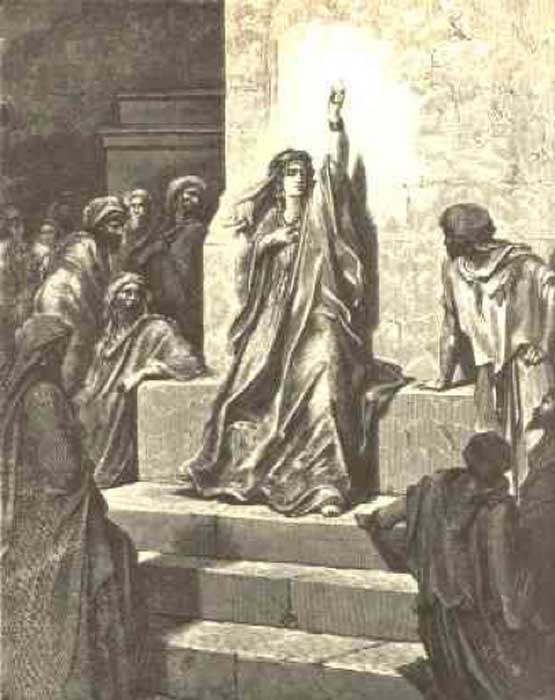
Calling Commander Deborah and Callous Jael to Defeat the Canaanites
Of the multitude of wars and battles, whether based on individuals seeking revenge, vendettas, or conflicts that unify or partially unify a nation, the Biblical allegory of Deborah is indeed a story that, as the author Richard Gabriel puts it, is “problematic for the military historian.” Deborah’s tale of the prophetess and commander who devised a brilliant strategy to trap the enemy, and Jael, the callous wife of a blacksmith, who drove a nail through the temples of the enemy’s commander, is set towards the end of the era of the Judges of Israel around 1125 to 1050 BC.

Deborah the Prophetess' interpretation by Gustave Doré (Public Domain)
The Way of the Sea
How did this conflict come about? According to the Bible: “the Lord sold them into the hand of Jabin king of Canaan, that reigned in Hazor; the captain of whose host was Sisera, which dwelt in Harosheth of the Gentiles.” Yahweh did not sell the Israelites into the hand of King Jabin; rather King Jabin sold them out in favor of economic expansion. What seems to have been a healthy relationship between the two nations long after Joshua’s northern campaign, the scripture in question suggests that the Israelite tribes who controlled the northern hill country and the Canaanites who controlled the lowland city-states in the Jezreel valley were probably temporary allies. The reason for this possible alliance was a trade route known as the ‘Way of the Sea’. The ‘Way of the Sea’ starts in the eastern delta of Lower Egypt, crossing through northern Sinai, from which it heads north along the coast of Negev and Judea before jutting inland through Megiddo, skirting or passing through the borders of Naphtali, Zebulun, and the Canaanites to the plain of Beth-Shan. As both nations grew in power and influence over the trade route, the Canaanites decided to confiscate the trade routes and forgo the conquest of northern Israelite lands.

The Way of the Sea / Via Maris (blue) and Way of the King (red) (CC BY-SA 3.0)
Taking Harosheth-goiim
While the Bible is silent on how the first strike occurred, it may have been hiding in plain sight all along. Sisera, the commander of King Jabin’s army, was based in Harosheth of the Gentiles or Haroshet-goiim. The key word is Haroshet-goiim. King Jabin understood that taking Haroshet-goiim was of strategic importance, for it links the: “narrow pass connecting the Jezreel valley to the northern coastal plain, in addition to the roads linking the Galilee region to the Sea of Galilee and the Jordan valley.”
- The Battle of Mount Gilboa: King Saul’s Defeat and Death
- The Gibeah Incident: Ancient Israel’s First Civil War Over a Concubine
- The Pros and Cons of the Armory of the Ancient Israelites
Furthermore, controlling Haroshet-goiim isolates and divides the various northern Israelite settlements, inevitably decreasing their power. While King Jabin’s strategy of divide and conquer would allow him to control the rich trade routes, it would only be temporary. The takeover of the trade route understandably caused a great uproar. Those affected, primarily Naphtali, Zebulun, and presumably Issachar, turned to a prophetess and judge by the name of Deborah for help. However, that uproar begs the question, were the tribes of Issachar, Naphtali, and Zebulun, oppressed for 20 years or was it gradual? While it is hard to say with certainty, it seems reasonable that the northern Israelite uproar was due to King Jabin gradually monopolizing the trade route, and that the final nail in the coffin was the takeover of Haroshet-goiim.

The Mother of Sisera looked out a Window by Albert Joseph Moore (Public Domain)




